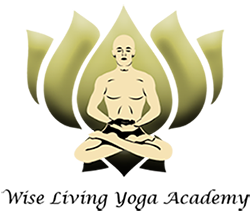20 Sep Yoga Education – Part 1
The ultimate purpose of pedagogy, the science of teaching, is the attainment of human maturity. It is this that distinguishes this art from other disciplines, distinctly defining it in its own essence. Maturity is obtained by different traditions of education all over the world. Nowhere does it achieve greater results though, than, when the education process itself is studied objectively devoid of dogma.
Yoga, it has been established, has very specific educational functions. It helps in achieving a higher state of consciousness on the evolutionary scale of individual development. It is the discipline of the body and mind and in that sense it is education, because education leads to discipline.
Yoga a Science of Life
Yoga is as old as life itself. In essence it is a specific way, a manner of living. Basing its insights and discoveries on the observation of nature, Yoga imparts a certain quality to life. Yoga, for example, tells us how to think, behave and grow to our fullest maturity. It provides us with procedures that consistently help us in every area of our life. Yoga can, thus, be defined as an ancient system of self-development that expedites one’s natural process of evolution. This applies to all departments of one’s life with a special reference to the evolution of consciousness.
Experience & Yoga Education
Experience has proven to be the primary building block of learning. The closeness of an experience to the personality helps in building newer traits. These take root as against other kinds of learning that remain detached from the central core of our personality. A deep sense of relaxation is consciously cultivated and this, in turn, fosters other worthwhile experiences. What is stressed is the actual experience – as opposed to mere information or technique. One may read about relaxation or listen to a physician’s instruction, but the condition remains distant in comparison to the actual experience, consciously induced.
Aims & Objectives
The aim behind the introduction of an experience-Yoga-based program is to foster self discipline, cultivate high ideals and appreciate higher values. It also promotes a deeper understanding of Indian culture and a habituation to the Yogic way of life. A variety of worthwhile experiences become the basis of learning at both the subconscious and conscious levels. Some of these are related to better physical control of human organism and the maintenance of its steadiness and strength. It establishes self-reliance, self- confidence; the cultivation of objectivity in emotional experiences and finally conditions oneself for greater receptiveness in the learning program.
All problems originate from a state of imbalance between our physical, mental and spiritual levels. Our problems are closely related to our understanding of life and the patterns we choose to follow. The more we cherish materialistic values, the more we expose ourselves to pain, suffering and problems. The struggle for the satisfaction of our desires and ambitions is a continuous one, leaving us with no rest. Our constantly over strained nerves make our bodies and minds restless and weak, opening doors to passion and emotion.
Perhaps the very first step towards a more fulfilling life would be, simply, the acceptance of life itself. It involves a faith in life, but perhaps even more important, a surrender to a larger reality. This acceptance does not imply a placid acquiescence of any aspects of modern living. On the contrary with acceptance of life comes the acceptance of our duties and responsibilities in life.
 |
| Excerpt of a poster displayed at an exposition on Yoga Education, by The Yoga Institute of Santacruz, Mumbai – India. |
Activity & Attitude
The traditionalists in Yoga recommended the right combination feelings and attitudes with certain selected physical activities. The physical activity is undoubtedly selected after deep consideration. It proves incomplete without the proper attitude. If the activity is the right kind and the attitude enriches one’s consciousness, then the entire exercise – is satisfying and elevating.
We see the reverse of this when a person struggles to succeed in Shavasana (Dead Body Pose) – or any other relaxation posture, or in a meditative pose – without having first created a passive attitude. It is thus that, throughout the Yoga Teacher Training Course or any other workshop or workshop, activities and processes are carried out only after a certain ‘conditioning’ of preparation has been achieved.
The selection of Yoga processes and the correct performance of them along with the right state of mind all need to be attained. We tend to sacrifice that total for the immediate and fragmentary. Sometimes Yoga practices are carried out for their demonstrative value and at other times for attaining physical fitness. In taking up Yoga in this partial manner one really does not gain much.
So in our next post, we will have an opportunity to examine how does one select the right type of asanas (postural training), or better saying, how do the ancient Yogis have selected the right type of exercising disciplines best suited for the students of self-culture and for naturally leading one to a more balance state of mind and to the habituation to a spiritual consciousness.
Source:
Excerpts of the book Yoga and Total Health in Schools – published by The Yoga Institute of Santacruz.

No Comments